LinkedIn isn’t just useful for job seekers or businesses trying to recruit new talent, it’s also great for marketing. But what is LinkedIn marketing and what can it do for your business?
LinkedIn marketing can really propel the growth of your business. And if you are a B2B business owner or marketer, you really can’t afford to ignore LinkedIn marketing.
How can you do LinkedIn marketing successfully? In this comprehensive guide, I’ll cover what LinkedIn marketing is, best practices, tools, and more.
Basically, it’s like a crash course – all about LinkedIn marketing. So, get your notebooks out, we’re going to talk some serious business!
What is LinkedIn?
LinkedIn is the world’s largest professional networking website. LinkedIn can be used to find jobs, connect with business contacts, and network with other professionals. LinkedIn also allows users to post their resume and portfolio online.

What is LinkedIn Marketing?
LinkedIn marketing is a process of creating content and engaging with other users on the LinkedIn platform to grow your business.
Most B2B businesses use LinkedIn marketing to build brand awareness, generate leads, and create sales opportunities. To be successful with LinkedIn marketing, you need to produce high-quality content that will resonate with your target audience.
You also need to be active on the platform, engaging with other users and building relationships.
With a little effort, you can use LinkedIn marketing to take your business to the next level.
Why You Should Consider Using LinkedIn for Marketing
As a marketer, you may be wondering if LinkedIn is worth your time and effort. After all, isn’t LinkedIn just a place for job seekers and businesses to connect?
Actually, LinkedIn can be an incredibly powerful marketing tool – if used correctly. In fact, LinkedIn has several unique features that make it ideal for marketing.
It's a great way to connect with other professionals in your field, as well as stay up-to-date on news and trends in your industry. Here are some reasons why you should consider using LinkedIn for marketing:
Get More Reach: You can reach a large audience of professionals. LinkedIn has over 850 million members in 200 countries. It's a great way to reach a large number of people around the world.
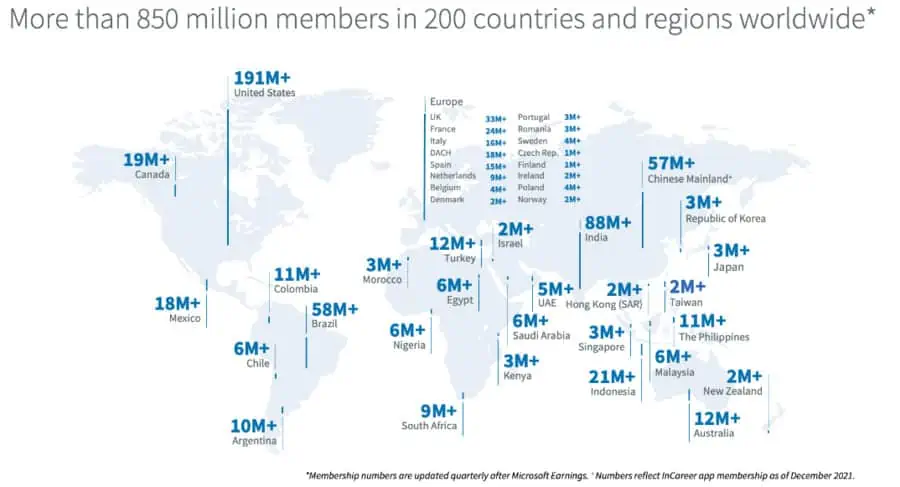
Build Better Relationships: LinkedIn is a great platform for building relationships. Because it's a site for professionals, it's a great place to build relationships with potential customers and clients.
Get Your Message Across to Relevant Audiences: LinkedIn allows you to target your marketing messages to specific groups of people, which can help you get your message across more effectively.
LinkedIn allows you to target your advertising according to specific criteria, such as job title, company size, or even location. This means that you can reach your target audience with laser-like precision.
Save Money: LinkedIn marketing can be very cost-effective. Because LinkedIn is a free site, it's a very cost-effective way to market your business.
If you're not already using LinkedIn for marketing, then now is the time to start. It's a great way to reach a large audience, build relationships, and target your marketing messages.
And if you are wondering how to leverage LinkedIn for marketing, keep reading. We’ll explain all the details in a step-by-step manner.
How to Use LinkedIn for Business Marketing
So what is LinkedIn for business purposes? How do you make the most of LinkedIn for business marketing? Depending on your overall marketing goals, you can use LinkedIn for marketing in multiple ways. In this section, let’s explore how to use LinkedIn for business marketing in 4 different ways:
1. Create Thought Leadership
As a business-focused social network, LinkedIn is the perfect platform for thought leadership content. By sharing high-quality articles, blog posts, and other forms of content, businesses can establish themselves as leaders in their industries.
Not only does this help build trust and credibility with potential customers, but it also helps attract top talent to your company. After all, who wouldn't want to work for a company that is considered a thought leader in its industry?
LinkedIn also offers a number of features that make it an ideal platform for thought leadership content. For example, LinkedIn Pulse allows businesses to publish long-form articles directly on the site, giving them greater visibility and reach.
It is a content discovery platform where users can find and share articles within their LinkedIn network. By sharing relevant and interesting articles, brands can build trust and credibility with their audience, while also driving traffic back to their website or blog.
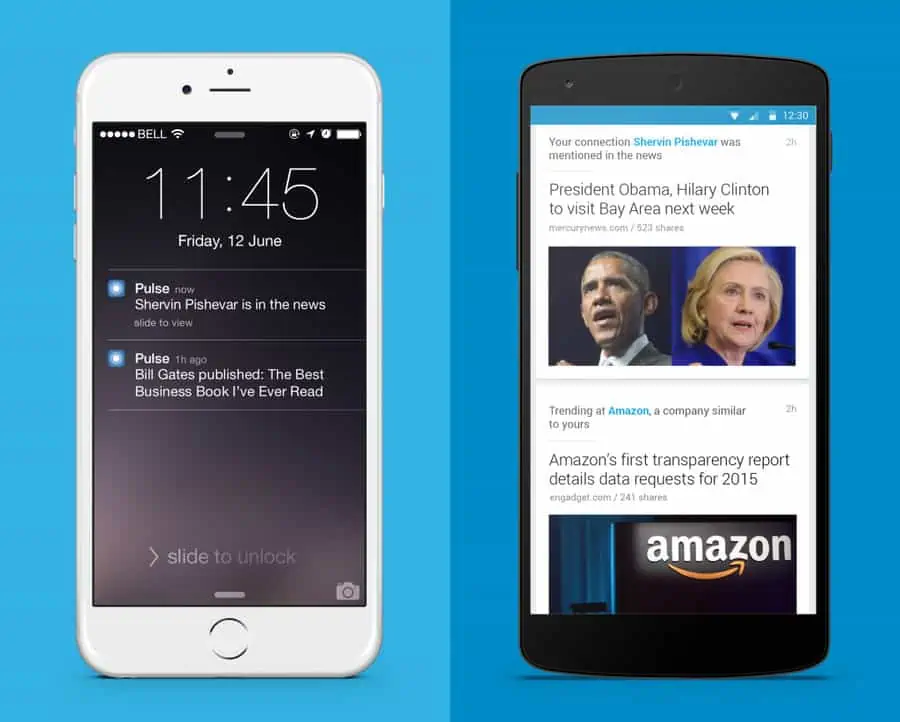
This platform also notifies users of trending posts in their industry. For these reasons, LinkedIn Pulse can be an extremely valuable tool for any business looking to grow its online presence.
In addition, LinkedIn Groups provide businesses with a way to connect with like-minded individuals and engage in discussions around relevant topics.
Groups provide a forum for discussion and debate, and allow members to share ideas and resources. They can also be used to promote events or products, and to generate leads.
LinkedIn groups offer an invaluable opportunity for brands to connect with their customers and create loyalty. However, it is important to note that not all LinkedIn groups are created equal. There are many inactive or spammy groups out there, so it's important to choose wisely.
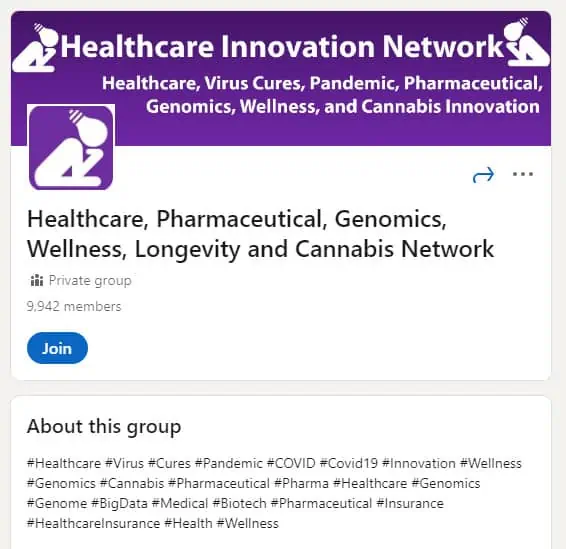
Overall, using LinkedIn for thought leadership is an excellent way to build your brand's reputation and create meaningful connections with your target audience.
2. Network More Effectively
There are many reasons why brands should be using LinkedIn to network more effectively. First, LinkedIn provides access to a large pool of highly-skilled professionals. This is especially valuable for small businesses or startups that may not have the resources to hire full-time staff.
Second, LinkedIn allows you to target your networking efforts specifically towards individuals or companies that are relevant to your business. This ensures that you are spending your time and energy on building relationships that have the potential to be beneficial for your brand.
Finally, LinkedIn offers a number of features and tools that can help you to build and nurture relationships with others.
For example, the “endorsements” feature allows you to give public praise to someone in your network. This is a great way to show your appreciation for someone’s work, and it also helps to strengthen your relationship with them.
The “messaging” feature allows you to easily keep in touch with people in your network, even if you don’t have their contact information.
3. Post Job Listings
There are a few key reasons why brands should post their job listings on LinkedIn. First, LinkedIn is the world’s largest professional network with over 850 million members in over 200 countries and regions. This gives your brand a massive audience to reach when you post a job listing on LinkedIn.
Second, LinkedIn is a very effective way to target passive candidates. These are people who are not actively looking for a new job but may be open to new opportunities if they see something that interests them.
By posting your job listing on LinkedIn, you can reach out to these passive candidates and potentially attract them to your brand.
Third, LinkedIn has powerful tools that allow you to target your job listing to specific groups of people based on their skills, experience, and other factors. This ensures that your job listing is seen by the right people, which increases your chances of finding the perfect candidate for the job.
Here is an example of a company using LinkedIn to announce job vacancies:
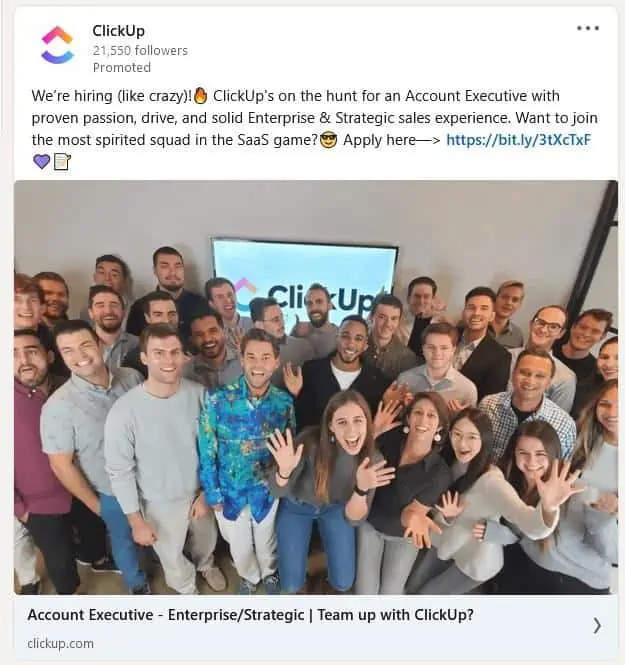
4. Use LinkedIn Ads
LinkedIn Ads can be a great way to reach out to potential customers and create a connection with them. LinkedIn Ads allow you to target your audience through different filters such as job title, company size, or location.
Here is an example of how WeWork uses LinkedIn Ads to attract more business:
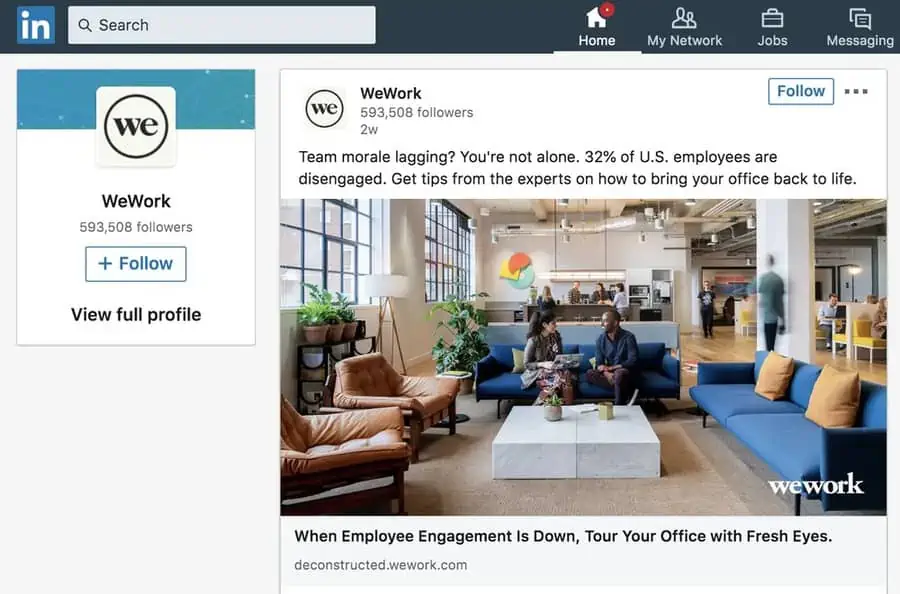
You can also use LinkedIn Ads to promote your brand’s content and drive traffic to your website. Here are some reasons why brands should use LinkedIn Ads:
- LinkedIn Ads allow you to target a specific audience that is most likely to be interested in your product or service.
- LinkedIn Ads give you the ability to track leads and conversions. This data can help you optimize your ad campaigns and improve your ROI.
- LinkedIn Ads provide an opportunity for building brand awareness and creating thought leadership around your industry.
If you’re looking for a way to reach out to potential customers and create a connection with them, LinkedIn Ads is a great option. The platform allows you to target your audience through different filters and track leads and conversions.
Plus, LinkedIn has different types of ad formats that you can experiment with. Here are all of them:
- Sponsored posts
- Sponsored job ad listings
- Sponsored text ads
- Sponsored messaging (to a user’s LinkedIn inbox)
- Photo carousel ads
- Dynamic ads
How to Set Up a Business LinkedIn Page
By now, you already know that LinkedIn is a powerful tool to have in your networking arsenal. But what if you're not sure how to set up a LinkedIn page for your business? Don't worry – we've got you covered.
Now, let me be clear – Creating a LinkedIn page for your company is NOT the same as creating a LinkedIn Profile. Both LinkedIn pages and LinkedIn profiles serve different purposes.
LinkedIn pages are designed for companies, while LinkedIn profiles are designed for individuals. Pages give companies a way to promote their brand and connect with potential customers, while profiles allow individuals to showcase their work experience and skills.
If you're a business owner, you'll want to create a LinkedIn page for your company. You can list yourself as the owner/employee of the company and create a LinkedIn profile for yourself.
Here's a step-by-step guide to setting up your LinkedIn page for your business:
Step 1: Log in using your LinkedIn profile.
Step 2: Go to the “Products” tab that you see on the upper right corner of your profile.
Step 3: Select the option for “Create a LinkedIn page.”
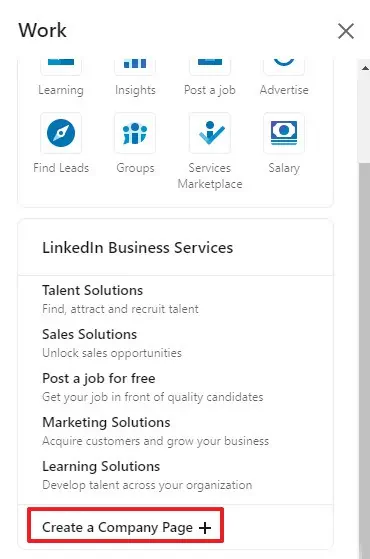
Step 4: Choose the type of page you want to create. You’ll see three options here: Company, Showcase Page, and Educational Institution.

Step 5: Fill out all the required business information. Keep in mind that the public URL that you enter will be important. Search engines will use this public URL to look for your page.
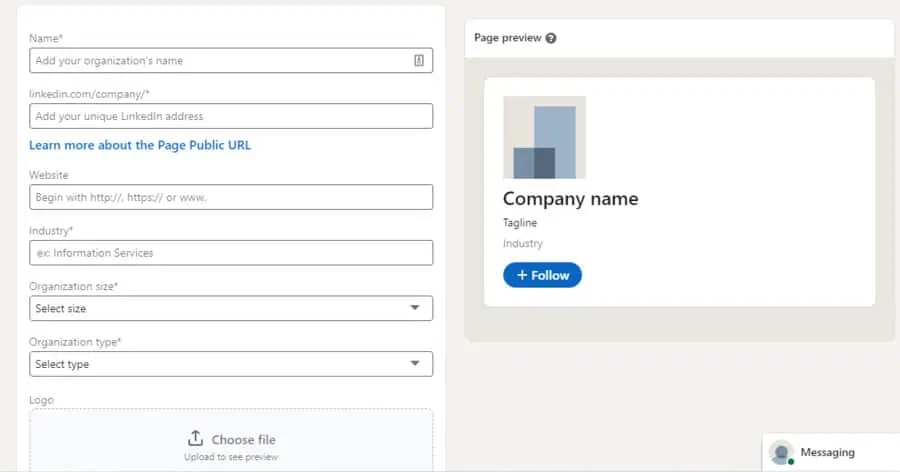
Step 6: Add your logo and tagline.
Step 7: Click on “Create Page.”
Tips For a Successful LinkedIn Business Page and Marketing Strategy
With a little effort, LinkedIn can be an extremely powerful marketing tool. By taking the time to create a strong profile and get involved in relevant conversations, you can build valuable relationships that will benefit your business for years to come.
But how can you make the most of LinkedIn marketing? In this section, we’ll answer that question and dive deeper into LinkedIn marketing strategies. Let’s get started.
1. Create an Optimized Company Page
The first step to taking advantage of LinkedIn marketing is to create a Company Page. This is where you showcase your brand and tell your story. You want to make sure that your page is optimized so that it appears in search results and drives traffic to your website.
There are a number of things you can do to make sure your LinkedIn Company page is as effective as possible. Here are some tips:
- Keep your company information up to date and accurate
- Make sure your tagline accurately explain what you do and who your target audience is.
- Include key information about your company in the “About” section, such as what you do, your mission statement, and any relevant awards or recognition.
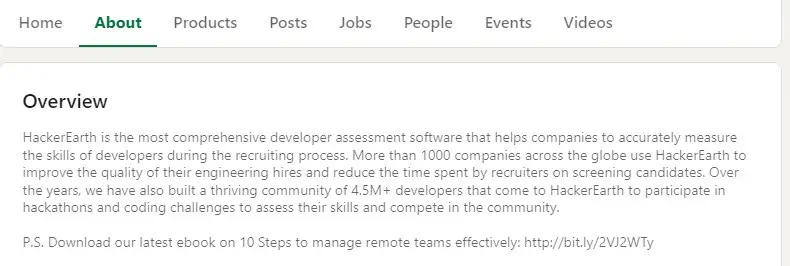
- Make sure your page is visually appealing – use high quality images and videos.
- Use keywords throughout your page so that it comes up in relevant searches.
- Encourage employees and customers to connect with your page.
By following these tips, you can be sure that your LinkedIn Company page is working hard for you and helping you to reach your target audience.
2. Use Relevant Hashtags
If you have ever wondered how to reach more people on LinkedIn, you need to start using the right hashtags. Hashtags help you connect with other professionals in your industry, and they can also help you expand your reach and grow your network.
When it comes to hashtags, less is more on LinkedIn. You want to use relevant, targeted hashtags that will reach your target audience. Using too many hashtags will not only look spammy but will also dilute your message and make it less effective. Stick to using one or two hashtags per post.
Another important tip is to make sure you're using hashtags that are specific to LinkedIn. There are a lot of general hashtags out there that are used across all social media platforms but don't necessarily have the same effect on LinkedIn.
Do some research and find hashtags that are specific to LinkedIn and will reach your target audience on this platform. You can even start your own hashtag campaign that is specific to your brand values and mission.
Here is an example:
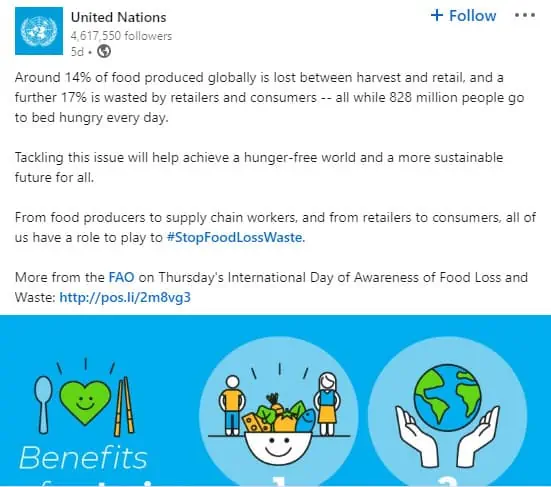
And finally, don't forget to track your results. Hashtags are a great way to measure engagement and reach on LinkedIn (and any other social media platform).
Keep an eye on which hashtags are performing well and adjust your strategy accordingly. With a little trial and error, you'll be able to find the perfect mix of hashtags for your business on LinkedIn.
3. Share Your Outside Posts on LinkedIn
If you're looking to increase your website's traffic, consider using LinkedIn's algorithm to your advantage. By adding external links to your blog or website in your LinkedIn profile, you can give your content a boost and encourage more people to check it out.
Just be sure to add interesting and relevant content that will appeal to your target audience, and you'll be well on your way to driving more traffic to your site.
If you come across something interesting from the web that is not written by you, you can share that too. Any high-quality content that engages your audience is a great addition to your LinkedIn page. Just keep in mind that you should give credit to the original source wherever needed.
By sharing articles, blog posts, infographics, and other forms of content on LinkedIn, you can position your brand as a go-to source for information related to your industry.
4. Participate in Relevant Discussions
Discussions on LinkedIn provide an opportunity for brands to showcase their expertise and thought leadership.
When done correctly, participating in discussions can help brands build trust and credibility with their target audiences. In addition, discussions on LinkedIn can also help brands generate leads and drive traffic back to their website or blog.
Joining relevant groups is a great way to get involved in conversations about topics that are important to your brand. You can also engage with other members by commenting on their posts and joining in on discussions.
To find relevant groups, you can simply type a keyword related to your niche in the search bar and select the “Groups” option. If you search for “small businesses,” here are the results you will get:
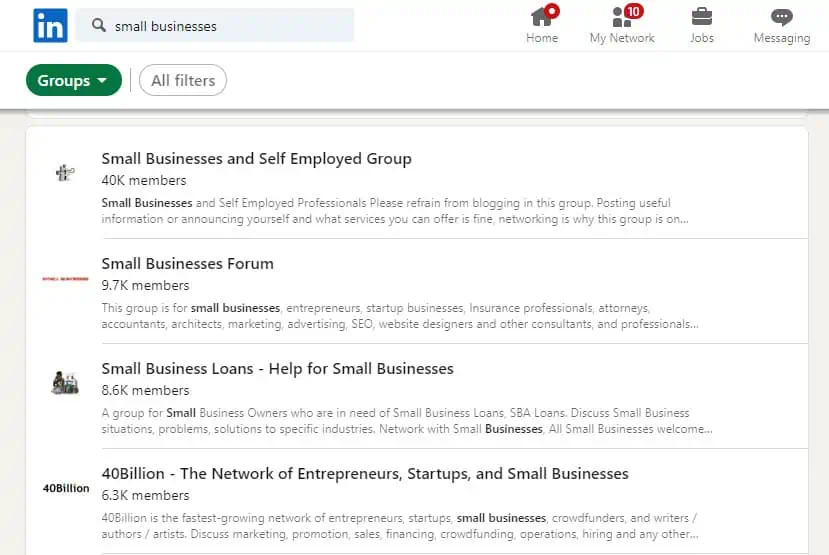
By participating in discussions on LinkedIn, you’ll be able to build relationships with others in your industry, gain insights into what others are talking about, and position your brand as a thought leader.
5. Share High-Quality Content
When creating content for LinkedIn, it's important to keep in mind the platform's professional tone. That doesn't mean that your content has to be dull or boring – far from it! Instead, focus on creating informative, insightful, and interesting content that will resonate with your target audience.
If you're not sure where to start, take a look at some of the brands that are killing it on LinkedIn. See what kinds of content they're sharing, and how they're engaging with their audience. Then, take those lessons and apply them to your own content strategy.
6. Experiment With Content Length
So what kind of content should you be posting on LinkedIn? That depends on your goals. If you're looking to build thought leadership, longer posts that showcase your expertise are a great option.
But if you're trying to generate leads or drive traffic to your website, shorter content that's easy to consume and includes a call-to-action is usually more effective.
No matter what kind of content you're creating, always make sure it's high quality and relevant to your target audience. LinkedIn is a professional platform, so anything you post should reflect that.
And finally, don't forget to mix things up! Variety is key when it comes to social media, so make sure you're not just posting the same type of content over and over again. Try experimenting with different formats, lengths and topics to see what works best for your brand.
7. Create LinkedIn Polls to Boost Engagement
LinkedIn polls are an excellent way to quickly gather information or feedback from colleagues, friends or even customers without having to send out long surveys.
They also have the potential of going viral if the question is interesting enough, providing valuable insights as well as promoting your brand to a larger audience.
When it comes to LinkedIn polls, there are a few different types that brands can create in order to boost engagement. For example, brands can ask questions about industry news or current events, as this will get people talking and commenting on the post.
Additionally, asking people for their opinions on products or services is another great way to increase engagement, as it shows that the brand is interested in what its customers think.
Finally, creating fun and lighthearted polls is also a great way to engage with followers, as it helps to humanize the brand and make it more relatable.
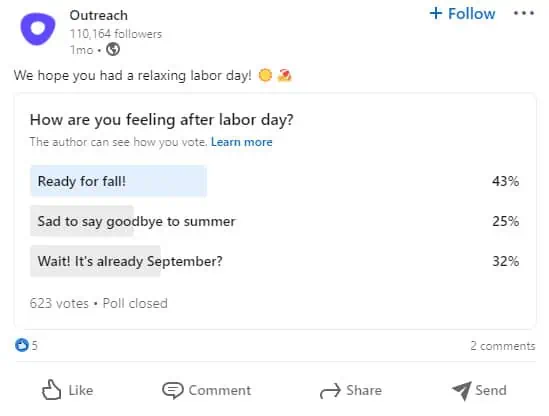
8. Announce Notable Milestones
LinkedIn is a powerful platform for connecting with potential customers and sharing your brand’s story. As a business, you should be using LinkedIn to its full potential by regularly posting updates, sharing relevant articles, and engaging with other users.
One way to make sure your LinkedIn presence is top-notch is by regularly announcing notable milestones. This could include things like reaching a certain number of followers, launching a new product, or winning an industry award.
By sharing these accomplishments on LinkedIn, you’ll not only show off your successes to potential customers but also build up your credibility as a thought leader in your industry.
Plus, it’ll give you an opportunity to talk about your company culture and values. So don’t be afraid to brag a little bit – it could pay off big time for your business!
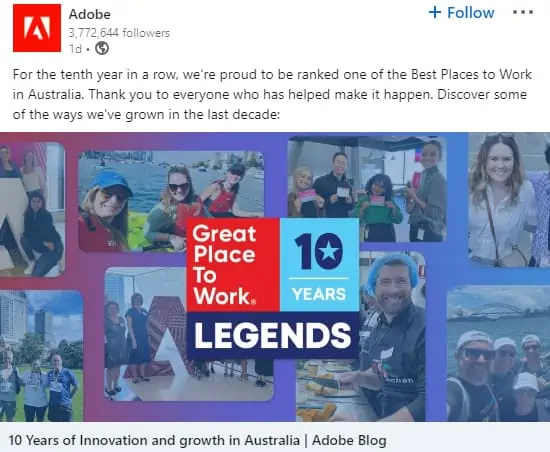
If you’re not sure how to get started, here are a few tips:
- Pick out the most impressive achievements that you want to share.
- Write a short and catchy headline for each one.
- Include a photo or video along with your update.
- Make sure to tag any relevant people or companies.
Once you start sharing your brand’s milestones on LinkedIn, you’ll be well on your way to building up a strong presence on the platform – and attracting more customers in the process!
9. Have a Consistent Posting Schedule
Consistency is key when it comes to social media. Your audience wants to know that they can rely on you to show up and deliver the content they enjoy and engage with. That's why posting frequency and consistency are so important for brands on LinkedIn.
If you're inconsistent with your postings, you run the risk of losing followers who will simply stop paying attention to your brand. On the other hand, if you're consistent with your postings, you'll build a loyal following of engaged fans who look forward to seeing your content pop up in their feed.
So how often should you be posting on LinkedIn? That really depends on your goals and objectives. If you're looking to generate leads on LinkedIn, then you'll want to post more frequently than if you're simply looking to build brand awareness.
No matter what your goals are, though, posting on a regular basis is essential. That could mean once a day, several times a week, or even just once a week. The key is to be consistent so that your audience knows when to expect new content from you.
10. Pay Attention to LinkedIn Analytics
As a business-focused social network, LinkedIn is a powerful marketing tool – but only if you know how to use it effectively. That’s where LinkedIn Analytics comes in.
By tracking your company’s page performance and engagement, you can get insights into what content is resonating with your audience and adjust your strategy accordingly.
So why should you bother with LinkedIn Analytics? Here are three compelling reasons:
First, LinkedIn Analytics can help you understand who your audience is and what they’re interested in. This information is valuable for tailoring your content strategy to make sure you’re creating material that will actually resonate with the people who see it.
Second, LinkedIn Analytics can show you which of your content pieces are performing well and which ones are falling flat. This allows you to course-correct in real time, ensuring that your LinkedIn marketing efforts are as effective as possible.
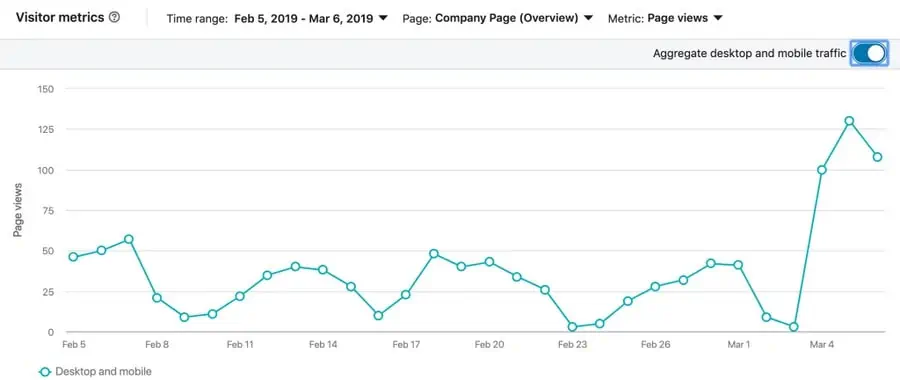
Finally, LinkedIn Analytics can help you track your return on investment (ROI). By understanding how your content is performing and how much engagement it’s generating, you can calculate how much value your LinkedIn marketing is actually delivering.
Best LinkedIn Tools That You Should Try Out
There are a lot of different LinkedIn marketing tools out there, but which ones are the best? In this section, we'll go over some of the top LinkedIn marketing tools to help you make the most of your marketing efforts on this platform.
1. Dux-Soup
Dux-Soup is a tool that allows you to automate your LinkedIn outreach. It’s an essential tool for any business that wants to scale their LinkedIn marketing efforts.
With Dux-Soup, you can automatically add new contacts, send messages, and follow up with prospects. It’s a great way to stay top of mind with your prospects, and it’s an extremely effective way to generate leads on LinkedIn.
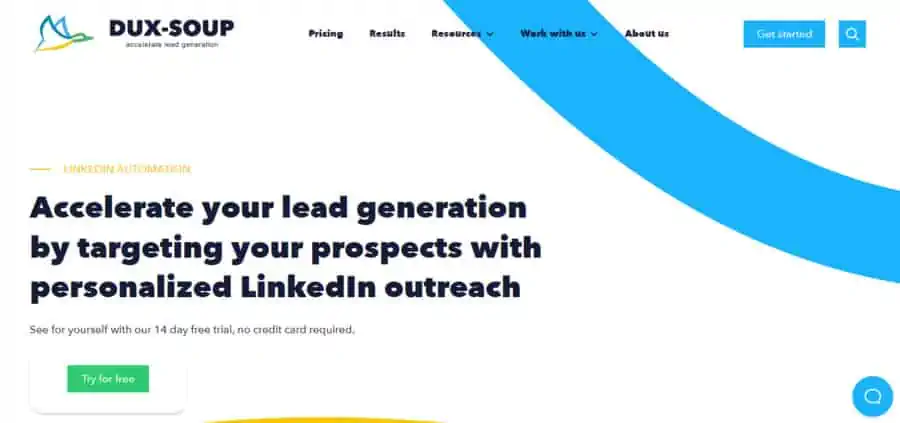
2. LeadFuze
LeadFuze is a LinkedIn lead generation tool that allows you to find contact information for potential customers. It also includes a number of features that make it easier to find specific leads with filters like company size.
Using this tool, you can also get verified information like personal email addresses.Overall, LeadFuze is an effective way to generate leads and grow your business.
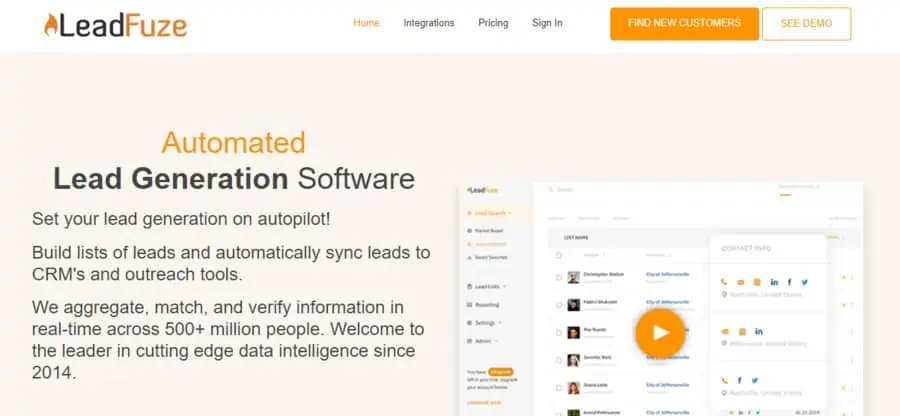
3. LeadFeeder
LeadFeeder is a great tool for salespeople and marketers who want to find new leads. If you're looking for an easy way to find new prospects, LeadFeeder is definitely worth checking out.
Using this sales intelligence tool, you can see the companies that visit your website. It's a great way to find new leads, and it can help you track which marketing campaigns are working.
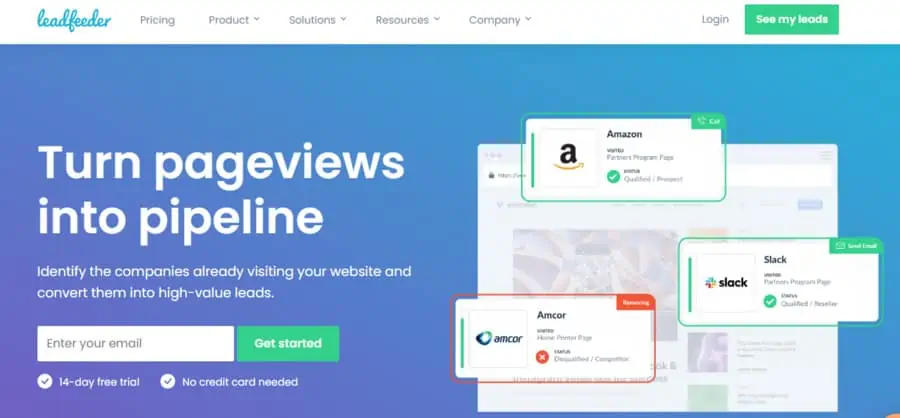
FAQs
1. How is LinkedIn used for marketing?
You can use LinkedIn to connect with potential customers and partners, share your company's story, and build relationships. LinkedIn is also a great way to stay up-to-date on industry news and trends.
2. Is Linked marketing effective?
When done correctly, linked marketing can be an extremely effective way to reach your target market. LinkedIn is a platform with over 850 million users, so there's a good chance that your ideal customer is on there.
By creating a profile and connecting with other professionals in your industry, you can build relationships and establish yourself as an expert in your field.
3. How can I use LinkedIn to grow my business?
There are a number of ways you can use LinkedIn to grow your business. You can start by building your profile and making sure it is up-to-date and accurate.
You can also join relevant groups and participate in discussions. Additionally, you can connect with other professionals in your field and build relationships.
Ready to Get Started with LinkedIn Marketing?
So, there you have it—now you know the answer to what is LinkedIn marketing and key things to keep in mind as you get started with it. Just remember that quality trumps quantity when it comes to connections, and be sure to post content that will actually be useful and interesting to your target market.
With a little time and effort, you can build up a strong presence on LinkedIn that will help you reach your business goals.
I hope this LinkedIn marketing guide was helpful in getting you started. If you have any other tips or questions, please feel free to leave a comment below. Thanks for reading! 🙂


Related Articles
The Right Time to Post on Social Media: A Reliable Guide
7 Best B2C Marketing Channels for Social Media in 2024
How to Grow Social Media Organically: 19 Tools You Need To Use in 2024
30 Best Social Media Marketing Tools in 2024
7 Social Media Analytics Best Practices You Should Follow
19 Best Social Media Management Tools for Marketers in 2024